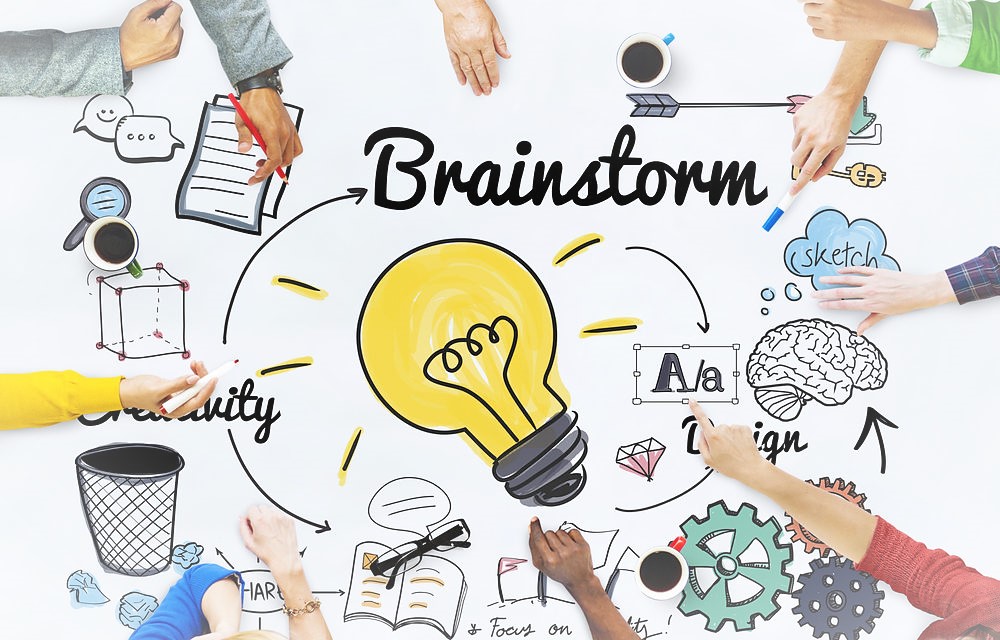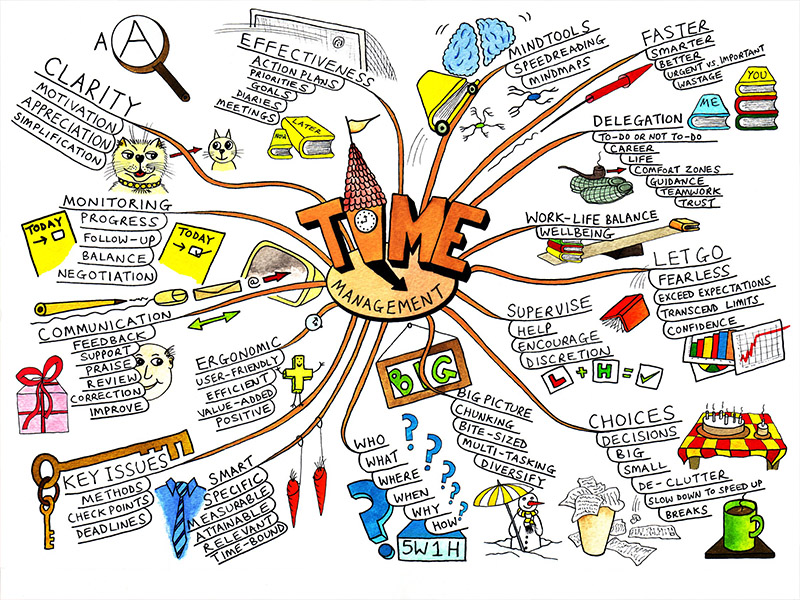In the information advertising race , Brainstorming is always the key point to create a successful campaign. So what is Brainstorm? This article by MarkKnow will explain the concept of Brainstorming and show the Standard Brainstorming process that brings efficiency!

What is Brainstorming?
The term Brainstorm is a combination of: Brain + Storm. However, to be precise, Brainstorm means “exploitation”, “brainstorming” to come up with ideas or solutions to a problem. This is a creative technique used to discover many ideas and solutions to a specific problem. This process usually takes place in a group, allowing members to discuss and contribute ideas without criticism or judgment.
In the field of Marketing, we are often encouraged to Brainstorm to create many new and unique Marketing ideas and topics.
For example:
- We need Brainstorming for our upcoming project.
- This issue requires brainstorming before implementation.
When to Use Brainstorming?
Brainstorming is often applied in the following areas of life:
- Advertising: Brainstorming will develop ideas for advertising campaigns.
- Problem-solving Area: Brainstorm to find difficulties, evaluate and analyze situations to come up with new solutions.
- Process Management: Brainstorm will improve the efficiency of product management, appraisal and processing.
- Team Building: Brainstorming creates sharing and exchange of ideas, encouraging members to think creatively.
What Role Does Brainstorming Play?
Brainstorming not only generates solutions to problems but also plays a vital role in business and personal productivity. Including:
Stimulate Creativity
Brainstorming creates an environment that fosters creativity by encouraging people to come up with new ideas without fear of judgment or criticism. The unlimited number and nature of ideas expands the scope of thinking, surpassing the limitations of traditional thinking. As a result, the group can fully exploit the creativity and imagination of each member. By allowing the freedom to express all ideas, from initial suggestions to bold solutions, Brainstorming creates opportunities for breakthrough ideas to emerge. The combination of these rich ideas creates a solid foundation for building new solutions to the problem being solved.
Promote Teamwork Spirit
Brainstorming plays an important role in strengthening team spirit by creating a collaborative space where everyone feels respected and recognized. When participating in this process, each member has the opportunity to contribute ideas and feel part of the collective, helping to strengthen cohesion and promote motivation to work together. At the same time, exchanging ideas and listening to each other’s views also helps build trust and understanding among members, minimizing unnecessary misunderstandings and conflicts. Through this, the group not only improves communication skills but also learns how to work more effectively, towards common goals in a unified and unified manner.
Effective Problem Solving
Brainstorming is a powerful problem-solving tool because it allows teams to approach a problem from multiple perspectives. This process allows team members to generate a variety of potential solutions, from common ideas to groundbreaking ideas. When people discuss and analyze together, the team can discover the strengths and weaknesses of each idea, and then combine and develop better solutions. Thus, Brainstorming not only helps identify and evaluate different options, but also allows teams to develop effective strategies to solve problems comprehensively and creatively.
Improve Decision-Making Ability
The Brainstorming process helps improve decision-making by generating multiple options and encouraging careful evaluation of options before making a choice. Gathering opinions from multiple members allows the group to have a multi-dimensional view of the problem, thereby minimizing personal bias and increasing transparency in the final decision. When ideas are compared and filtered based on specific criteria, the group can easily identify the solution that best suits the current situation. This not only makes the decision-making process more efficient and accurate but also ensures that the final choice is the result of consensus and contribution from everyone in the group.
Personal Skill Development
Participating in the Brainstorming process helps team members develop many important personal skills. First, creative thinking skills are enhanced when people have to think flexibly, overcoming the usual thinking patterns to build new ideas . Second, communication skills are also significantly improved when each member needs to learn how to present ideas clearly, coherently, and convincingly. In addition, listening and feedback skills are also cultivated, helping people know how to receive other people’s opinions in a constructive and positive spirit.
Create Motivation and Interest
Brainstorming creates a positive working atmosphere, inspiring members by encouraging creative participation. When an individual’s ideas are recognized and appreciated, it not only helps them feel confident in their abilities but also creates a strong motivation for them to continue contributing to the group. The comfortable, open atmosphere in Brainstorming sessions also helps reduce stress, creating conditions for everyone to express themselves in the best way. From there, the working process is not only more effective but also becomes interesting and inspiring, promoting teamwork spirit, improving overall performance.
Optimizing Time and Resources
Brainstorming helps optimize time and resources by utilizing contributions from many people to quickly collect different ideas and solutions to a problem. Instead of spending a lot of time thinking individually, the group can come up with a large number of ideas in a short time, saving a lot of time and effort. Moreover, combining the diverse knowledge and experience of members also allows for the maximum exploitation of the group’s creative and problem-solving potential. Thereby, the group can make quick and accurate decisions, while optimizing the use of available resources, ensuring the highest work efficiency.

Brainstorming Process
Brainstorming should be done in the following order to come up with great ideas and solutions:
Step 1: Choose a Leader
The facilitator acts as a moderator of the discussion. Their role is not only to guide, but also to keep the group on track. This requires flexibility in decision making, ensuring that everyone has a chance to speak, and avoiding a situation where a few individuals dominate the meeting. They are also responsible for encouraging creativity, reminding people of rules such as “no criticism” or “all ideas are welcome”. This helps create a safe environment where no one is afraid to express their thoughts.
Step 2: Identify the Problem to Brainstorm
Clearly defining the problem or goal is the most important step in the Brainstorming process. If the problem is too vague, the discussion will easily get sidetracked, and the ideas generated may not actually solve the problem. Therefore, the problem should be specific and clear, for example: “How to increase sales in the next quarter?” or “How to improve the user experience on the website?”. This clarity helps participants focus on the goal, providing more relevant ideas.
Step 3: Determine the Rules
Rules are fundamental to a successful brainstorming session. One of the most basic rules is “no judgment” – this allows people to come up with creative ideas without fear of being judged. Encourage all ideas, even those that seem “impossible” at first, as they may lead to breakthrough ideas in the future. Additionally, set speaking times to ensure that everyone has a chance to contribute. Some groups even use tools like time cards to help regulate how much time each person spends speaking.
Step 4: Share and Record Your Ideas
This is the stage where all ideas are freely expressed. The facilitator is responsible for recording all ideas, usually on a whiteboard or using note-taking software. It is important not to ignore any ideas, no matter how small or seemingly impractical. Ideation can be encouraged during this stage, where participants can expand or build on each other’s ideas. This free-flowing sharing helps to stimulate the group’s creativity and opens up new possibilities that may not have been initially considered.
Step 5: Idea Screening and Summary
Once all the ideas have been generated, it is time for the team to screen them to find the most promising ideas. The screening process requires the participation of all team members. Some common criteria for evaluating ideas include: feasibility, level of creativity, ability to implement in a short time, cost, potential benefits. The leader can use methods such as voting, scoring, or detailed discussion to identify the most feasible ideas. After screening, the team needs to summarize the best ideas, from which they can begin to plan for implementation or develop the ideas into specific solutions.
Techniques Used in Brainstorming

Brainstorming is not just sitting at a table and coming up with a bunch of ideas. Apply the techniques below to make your Brainstorm successful:
- Reverse Thinking Technique: think against the original reasoning to find unique, new solutions.
- Starbursting: revolves around questions to gauge opinions.
- The Stepladder Technique: encourages members who seem a bit “quiet” to participate more actively.
- Round–robin Brainstorm: allows the discussion to not be influenced by one-way opinions but all members can create their own ideas to discuss.
- Rolestorming: is a technique of giving opinions under the identity of another person.
- Crawford Method: helps contributions receive more consensus from the group, effectively encouraging member spirit.
Challenges When Conducting Brainstorming
The Brainstorming process may encounter the following challenges:
Unequal Participation
One of the biggest challenges in brainstorming is uneven participation. Some people may be enthusiastic and actively contributing, while others are quiet or do not participate. This can lead to a lack of diversity of ideas or missing important perspectives. To overcome this, the leader should encourage participation by asking open-ended questions and creating a friendly atmosphere. Setting clear rules about speaking time can also help ensure that everyone has a chance to speak.
Too Many Ideas
When brainstorming is effective, a large number of ideas can emerge in a short period of time. This can make it difficult to filter and categorize the ideas. Without an effective filtering process, the team can become overwhelmed with too much information and unable to determine which ideas are truly viable. Therefore, the team needs a clear method for recording and organizing ideas, such as categorizing by topic or priority.
Off Topic
During the brainstorming process, it is easy to get sidetracked, especially when the group discusses related issues but does not really focus on the main goal, leading to wasting time and reducing the effectiveness of the brainstorming session. This situation can be controlled by the leader monitoring the discussion, reminding everyone to return to the main topic when there are signs of digression. Having a whiteboard or notepad also helps the group stay oriented and return to the ideas that have been discussed.
Negative Reviews
One of the basic rules of Brainstorming is “no criticism”. However, in practice, there may be negative comments or criticism from some members, which can undermine the confidence of others and make them reluctant to participate. This not only affects the spirit of the group but can also lead to the omission of creative ideas. The leader needs to emphasize the importance of encouraging and respecting all ideas, and can also establish clear rules for feedback during the discussion.
Not Feeling Comfortable
A safe, comfortable environment is essential for people to be able to express their opinions freely without fear of being judged. If a group does not feel comfortable, they may withhold creative ideas or be reluctant to share personal thoughts. To create a friendly atmosphere, the leader can start with ice-breaking activities or create a comfortable space that encourages interaction. Showing appreciation for every contribution, no matter how small, helps build trust and a sense of comfort for everyone.
Some Notes for Successful Brainstorming
Keep the following in mind to help your Brainstorm generate unique ideas:
No Arguments, Respect the Opinions of All Group Members
To create a creative environment, it is important to respect the opinions of all members. Avoiding arguments about ideas during the Brainstorming process will help people feel more comfortable sharing their thoughts. Respect is a prerequisite to maintaining a positive atmosphere where all ideas are welcomed, not criticized.
Members Have Equal Rights to Share Their Opinions
One of the key elements to a successful Brainstorm is ensuring that all members have equal rights and opportunities to share their ideas. This not only creates diversity in ideas but also encourages active participation from everyone. The leader should encourage everyone to speak up and can set up a process to ensure that everyone has a chance to speak.
Organize Brainstorming in a Quiet Place
The environment in which you organize your Brainstorming session greatly affects the effectiveness of the discussion. A quiet, comfortable space with no distractions will help members focus more on the discussion content. You should avoid organizing it in noisy places or places with many distractions, such as crowded coffee shops or noisy offices.
Choosing the Right Time for Brainstorming
The timing of Brainstorming is also very important. The most suitable time for Brainstorming is when all members feel comfortable and in good spirits, avoiding times when everyone is stressed or busy with other work. You can choose to Brainstorm in the morning or after work, when everyone is in a good mood and ready to contribute ideas.
Everyone in the Group Needs to Understand the Purpose of the Brainstorming Session
Before starting, all members need to clearly understand the purpose of the Brainstorming session. The leader should clearly explain the issue to be discussed and what to expect from the meeting. Through this, each member will have a basic idea of the discussion content, clearly orient their own thinking direction, and from there come up with the most suitable ideas.
Record All Ideas
It is important to record all the ideas during the Brainstorming process so that no idea is missed. The leader can use a whiteboard, sticky notes, or online note-taking software to record the ideas in an organized manner. This way, no idea will be missed, and everyone can easily review and discuss when necessary.
Brainstorming Time Should Not Be Longer Than 1 Hour
To keep the discussion productive and avoid boredom, the Brainstorming session should be limited to 30-60 minutes. This way, members can maintain focus and energy throughout the discussion. If necessary, consecutive Brainstorming sessions can be held, but there should be breaks between sessions so that members have time to recharge.
Above is MarkKnow ‘s answer to the question What is Brainstorm , hope you have the answer for yourself. Visit MarkKnow.com to access more useful information!
Frequently Asked Questions
Who Should Participate in a Brainstorming Session?
Anyone who is relevant to the issue or project being discussed can participate. Diversity of perspectives and skills will help generate more creative ideas.
How to Prepare for a Brainstorm Session?
To prepare for a brainstorming session, you need to identify the problem to be solved, invite appropriate participants, choose a quiet, comfortable space, and establish clear rules for the discussion.
Do I Need to Use Any Support Tools When Brainstorming?
Depending on the needs of the group, support tools such as whiteboards, sticky notes, online note-taking software, or idea management applications can be used to organize and record ideas.
If You Don’t Have Many Ideas, How to Encourage Creativity When Brainstorming?
Methods such as open-ended questions, small group discussions or techniques such as “reverse thinking” can be used to stimulate creative thinking and generate more ideas.
Comment Policy: We truly value your comments and appreciate the time you take to share your thoughts and feedback with us.
Note: Comments that are identified as spam or purely promotional will be removed.
To enhance your commenting experience, consider creating a Gravatar account. By adding an avatar and using the same e-mail here, your comments will feature a unique and recognizable avatar, making it easier for other members to identify you.
Please use a valid e-mail address so you can receive notifications when your comments receive replies.
